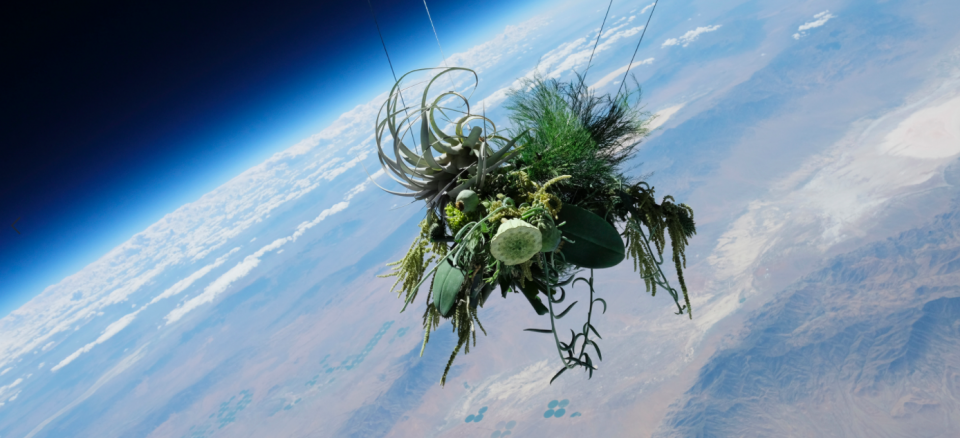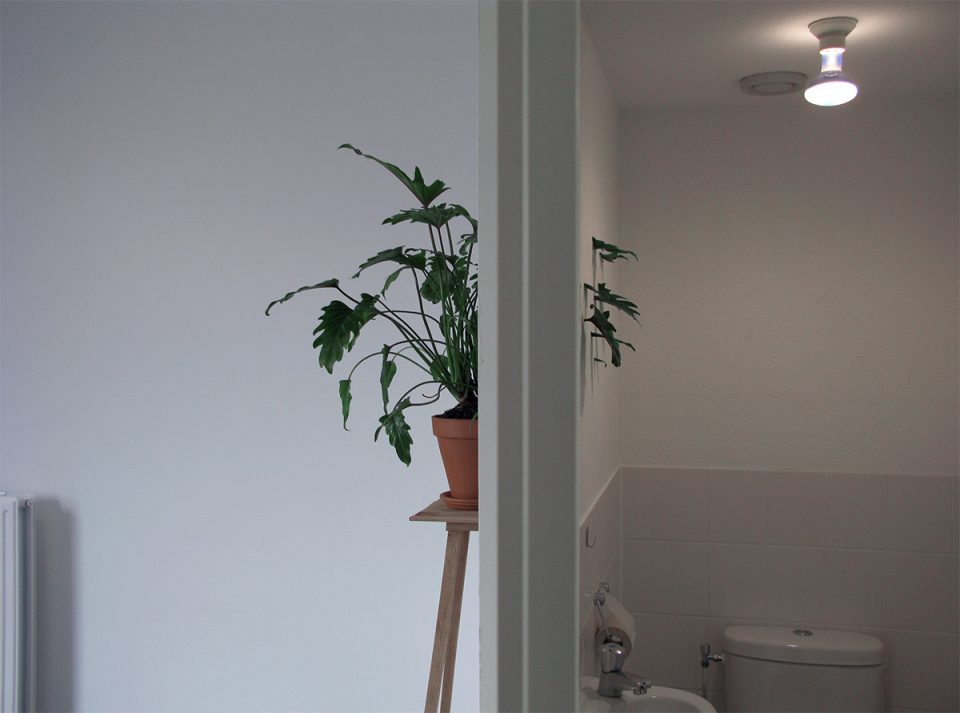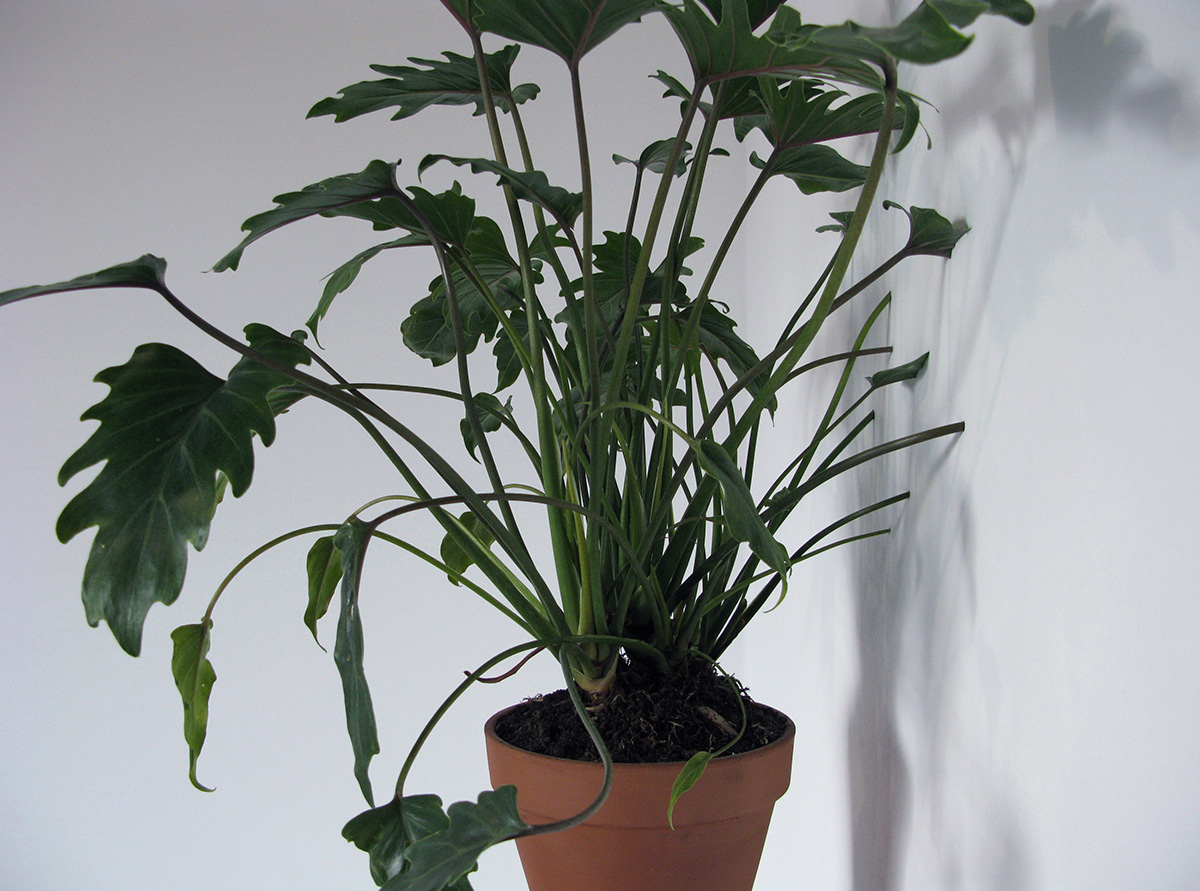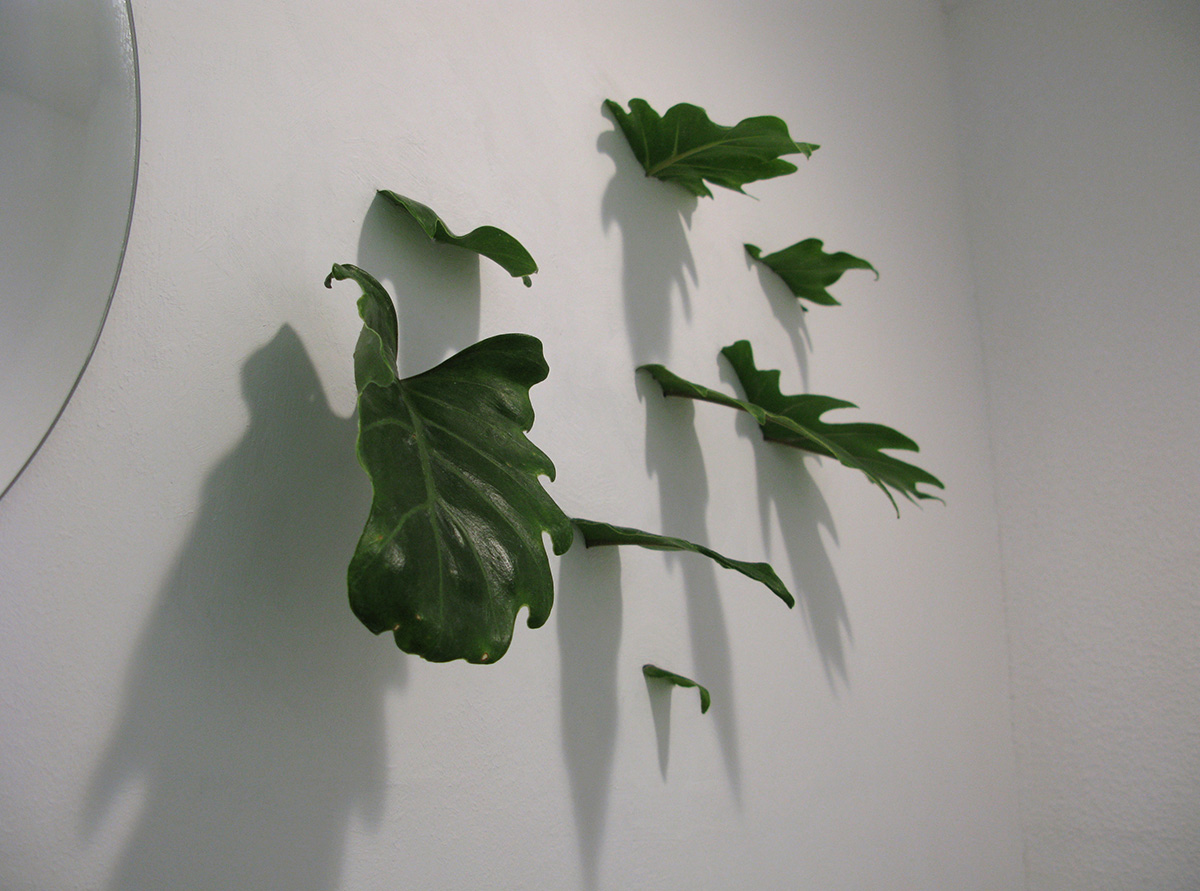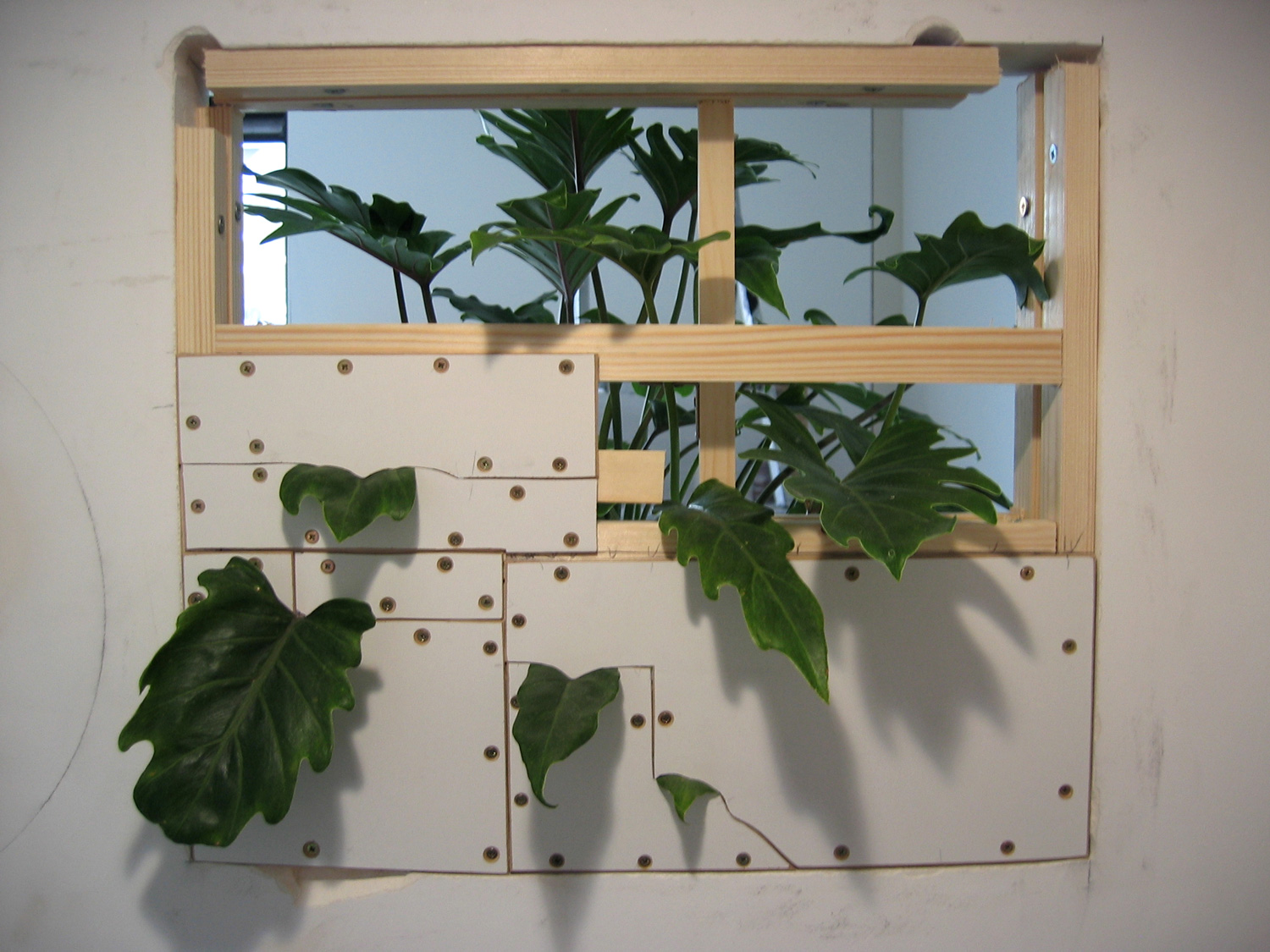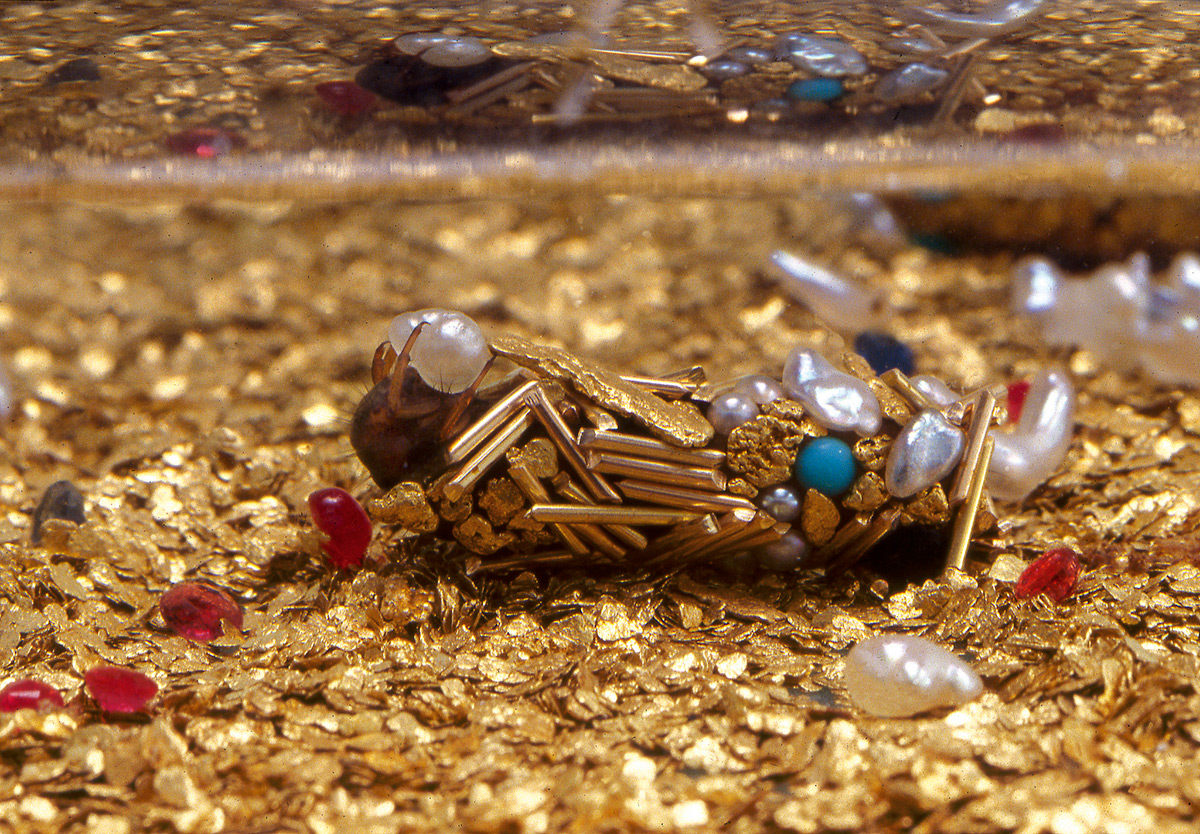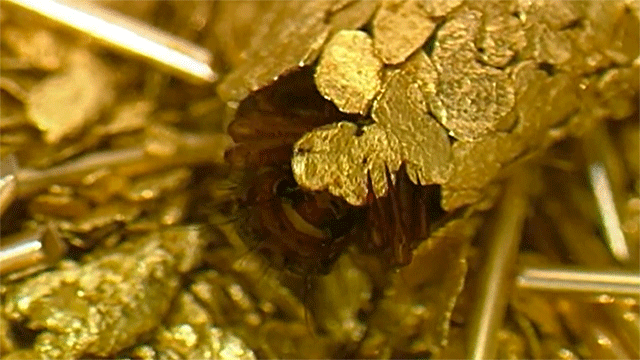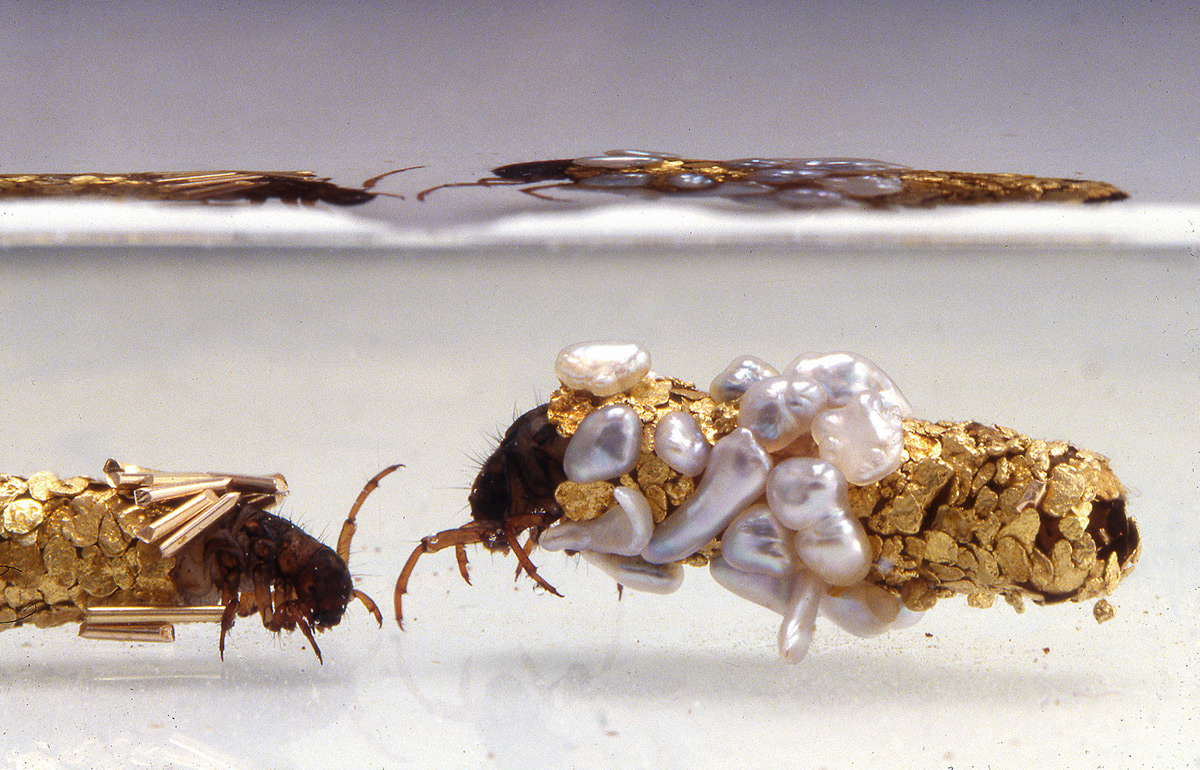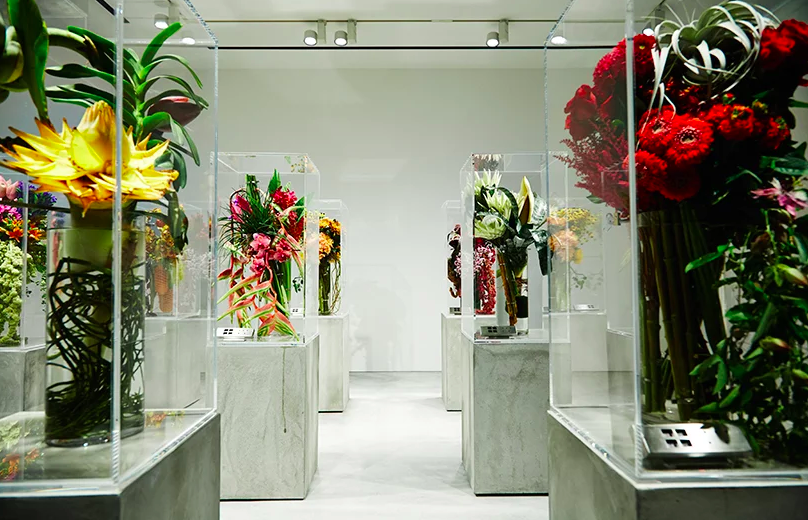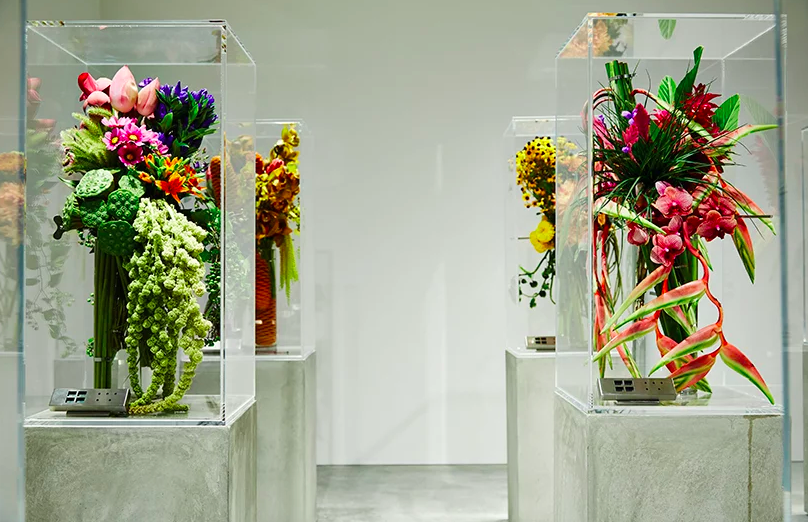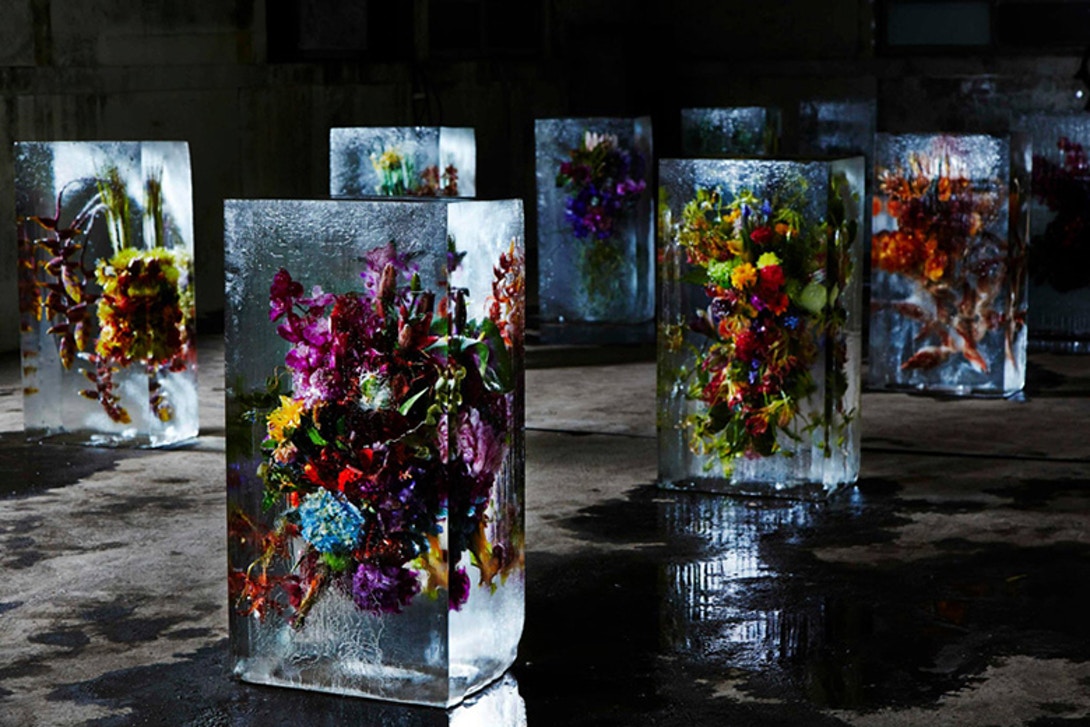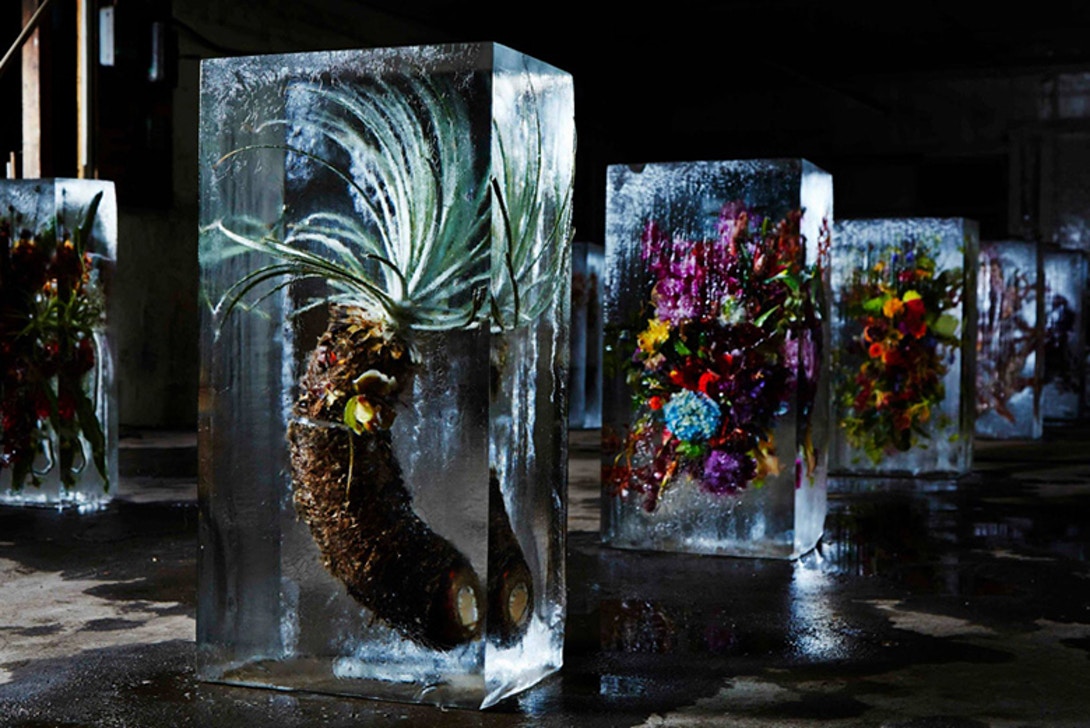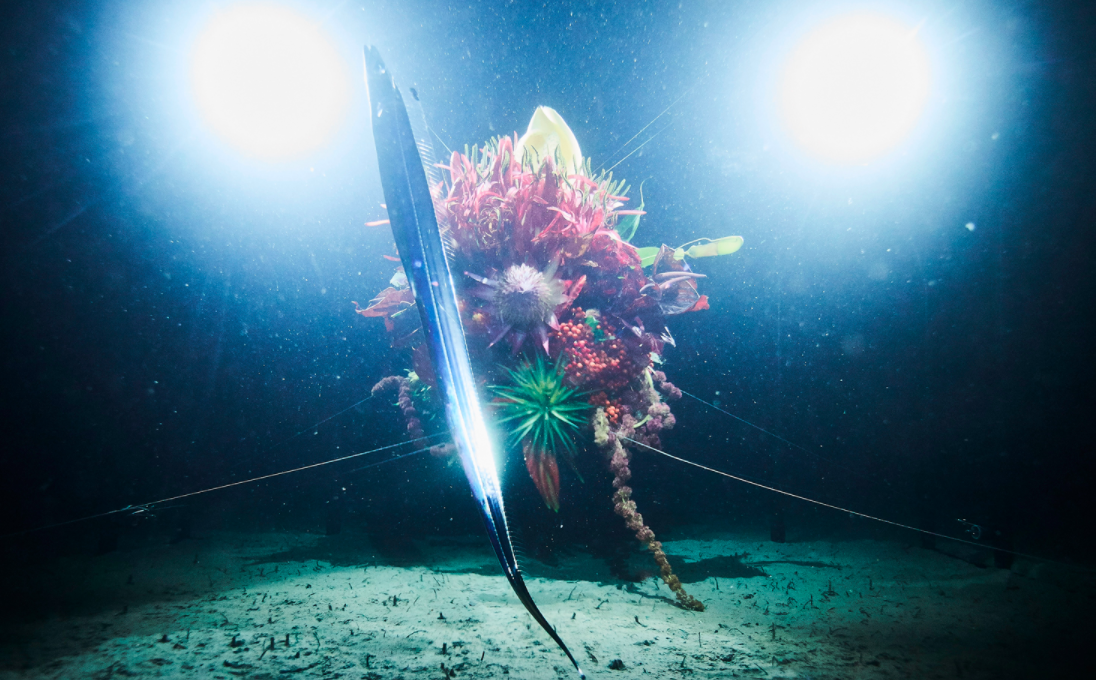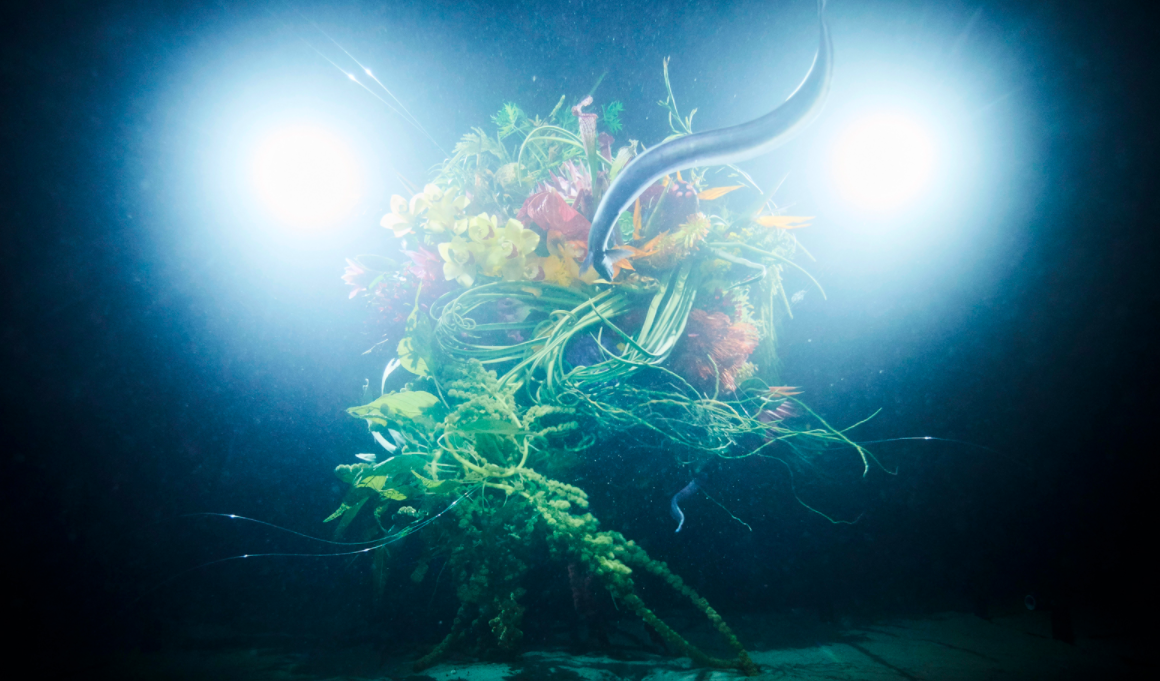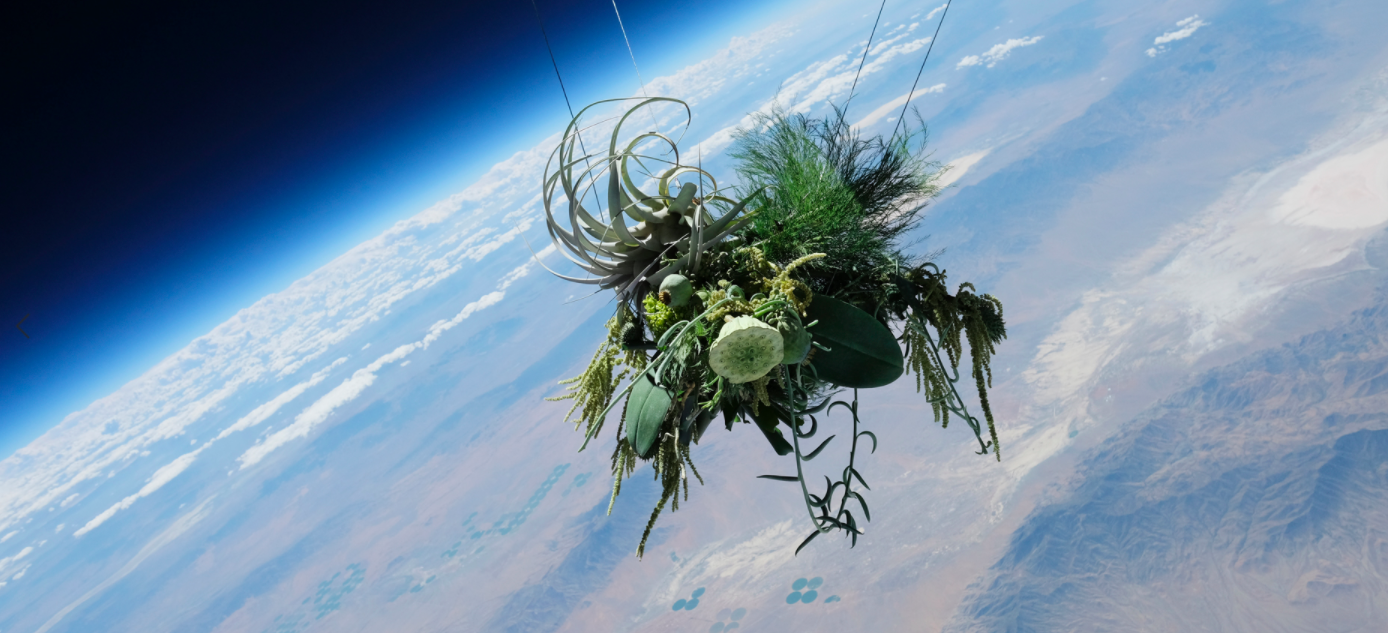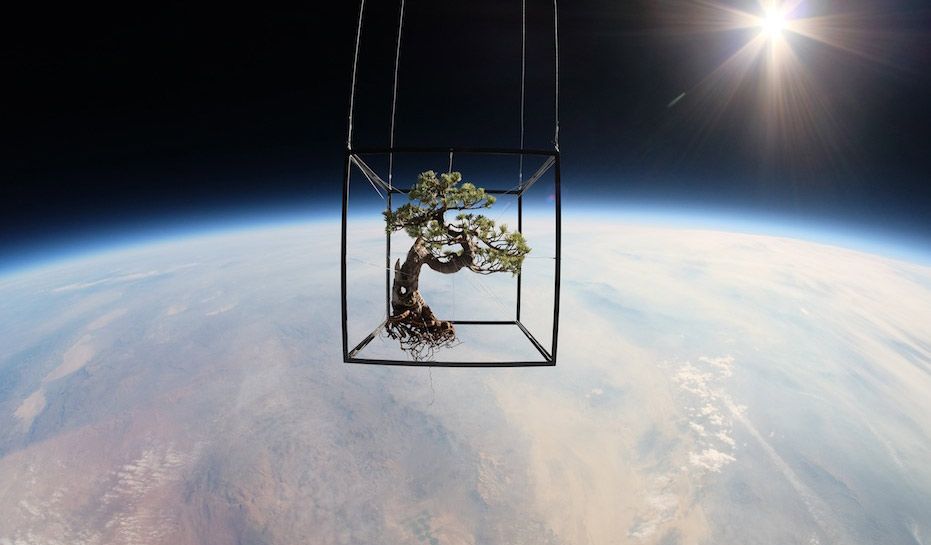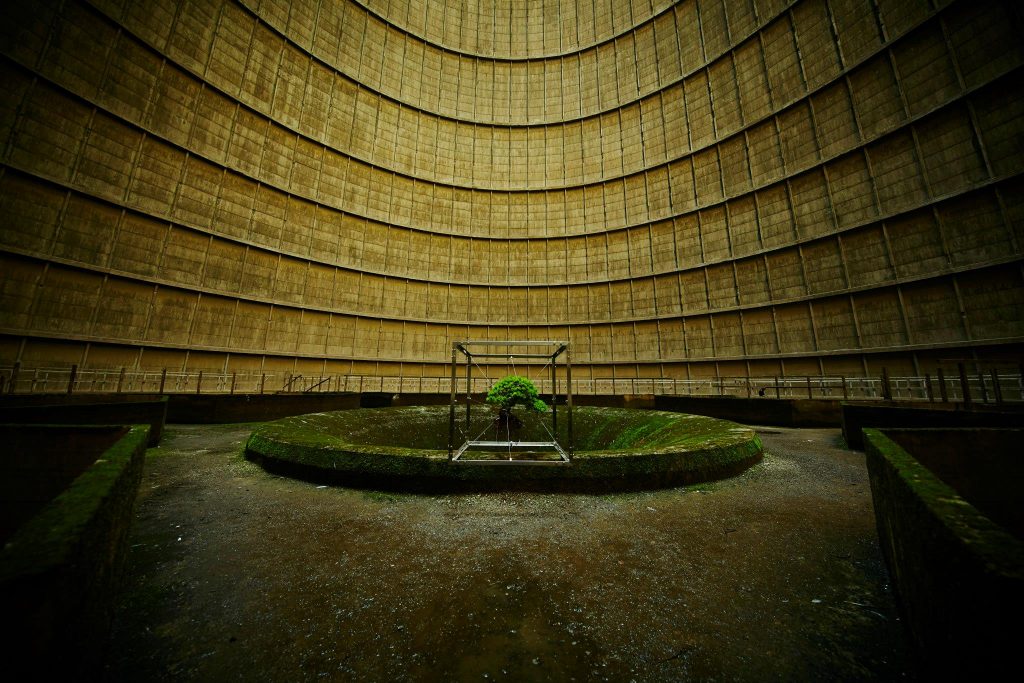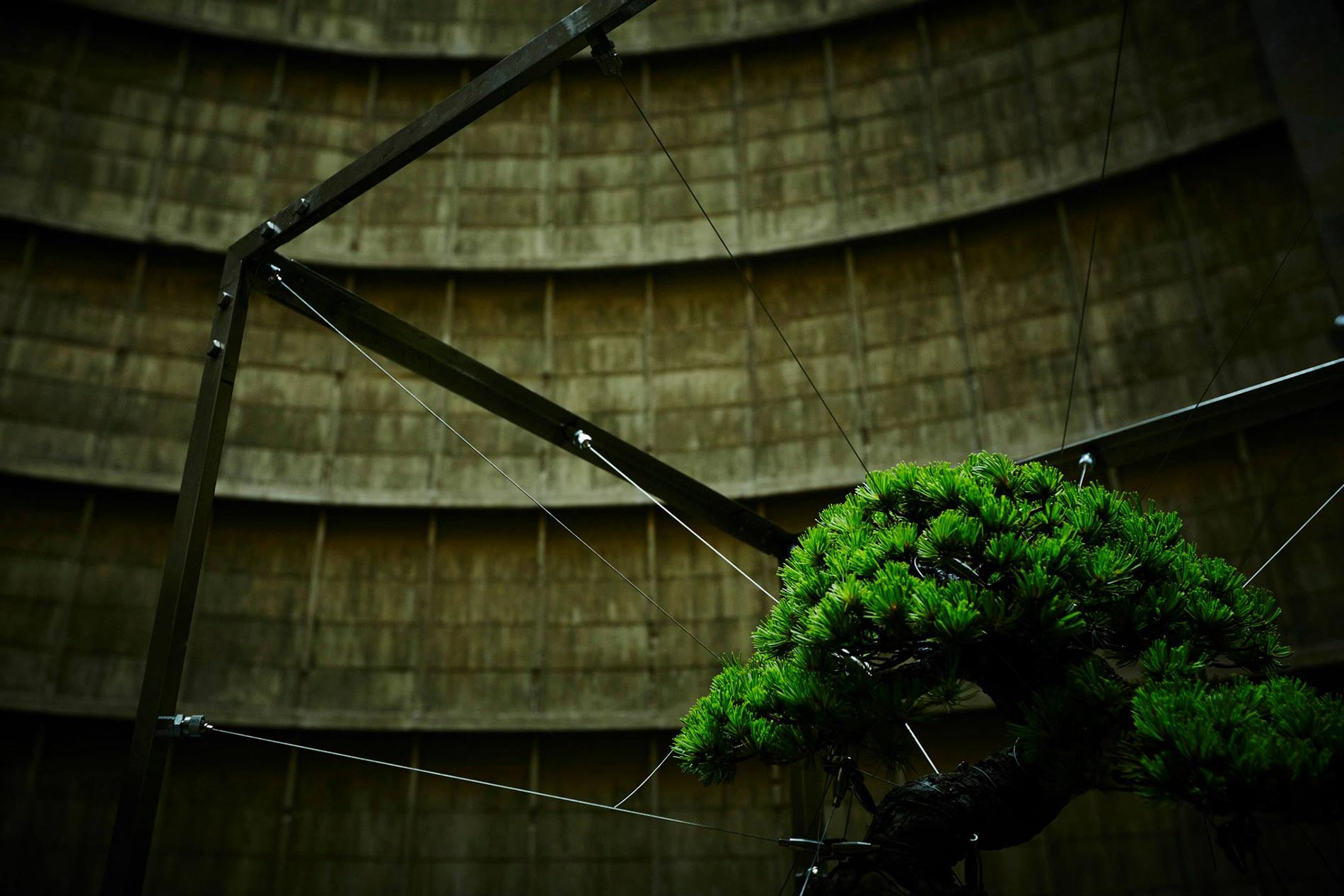Alternately beautiful and disgusting but nearly always fascinating, works of art that use nature in place of more traditional media raise questions about the power and responsibility of human dominance over our natural surroundings and the other species living on Earth. These living, breathing works of art might be innocently pretty, like modified flower petals or arrangements of colorful mushrooms, or they might feel a little more sinister, making controversial use of living mice, insects or bacteria swabbed from human orifices.
What’s your take on the use of living things as art? Do you believe the message justifies its potential death, even if it’s a bonsai tree or an ant?
Philodendron Xanad by Ruben Bellinkx
The lush green leaves of a living philodendron plant seem to have pierced right through a wall in a confounding installation by Belgium-based artist Ruben Bellinkx. The leaves, as you can see, are much too large and seemingly undamaged to have been forced through small holes in the walls – so how’d he do it? Quite simply, the artist rebuilt that section of the wall from scratch, cutting careful slits following the contours of the leaves with a jigsaw.
Jeweled Larval Cocoons by Hubert Duprat
When placed in an aquarium with nothing but gold, turquoise and pearls to make their cocoons from, caddisfly larvae will build themselves jeweled enclosures that end up looking like tiny sculptural treasures when they’re done. Artist Hubert Duprat ‘collaborated’ with the Trichopteres larva to produce the final results, which are held together with silk excreted from their salivary glands. The larvae spend a few weeks inside these jeweled cocoons before emerging as mature flies.
The Life and Death of Botanicals: 6 Works by Azuma Makoto
Artist Azuma Makoto is known for incorporating live and cut flowers, vines, bonsai trees and even full-scale palm trees into his botanical works of art, often contrasting themes of vitality and decay. For an exhibit entitled ‘Drop Time’ at the Mass Gallery in Tokyo, Makoto created beautiful bouquets and placed them inside acrylic boxes so their slow decay could be observed through all its stages. Another floral exhibit, ‘Iced Flowers,’ temporarily preserved bouquets inside blocks of ice.
For ‘Sephirothic Flower,’ Makoto took lush floral arrangements deep beneath the surface of the sea and photographed them in the dark waters, capturing their interactions with sea creatures like eels.
Makoto has even launched plants into space. ‘EXOBIOTANICA 2’ saw bouquets lifted beyond the Earth’s atmosphere using weather balloons, and the original EXOBIOTANICA did the same with a Japanese white pine bonsai inside a carbon fiber frame.
Somehow, the artist’s installation of a living bonsai inside an abandoned power plant feels just as momentous as those outer space shots, embodying a hopeful message about life springing eternal.
